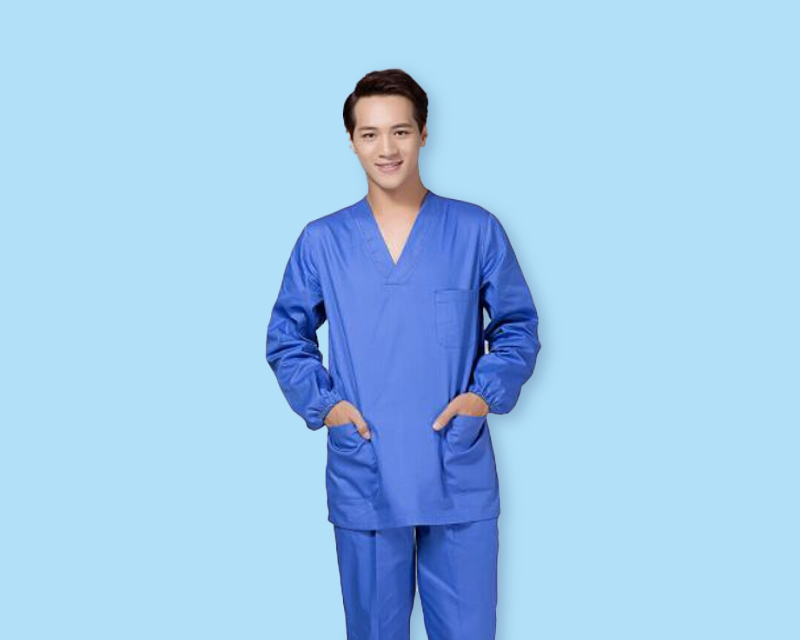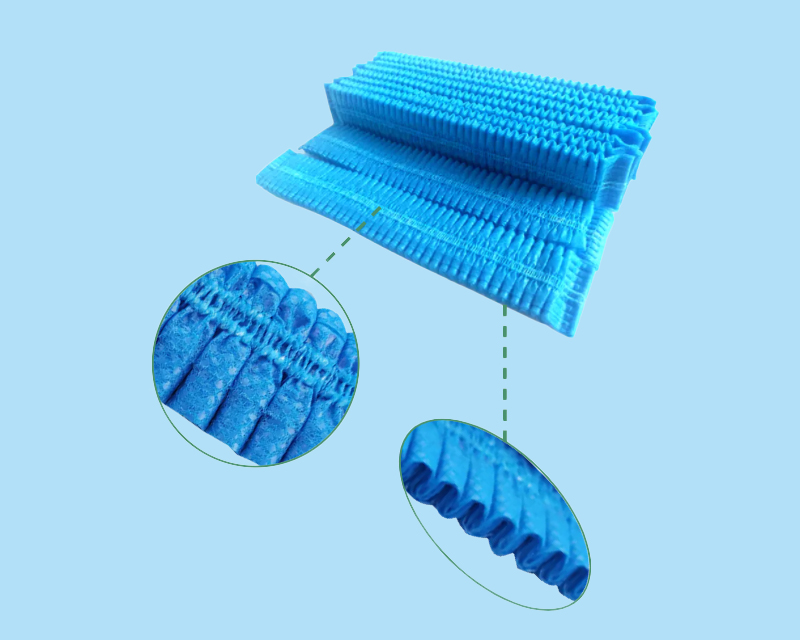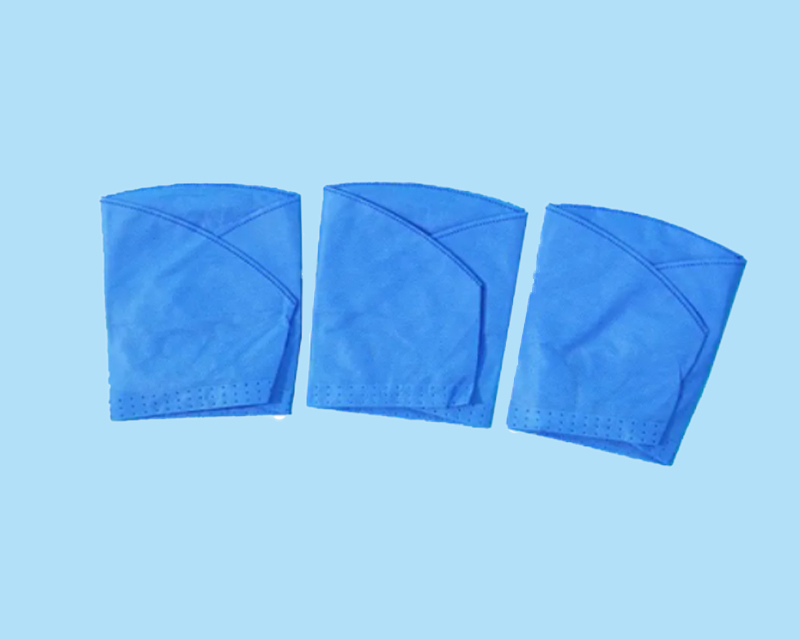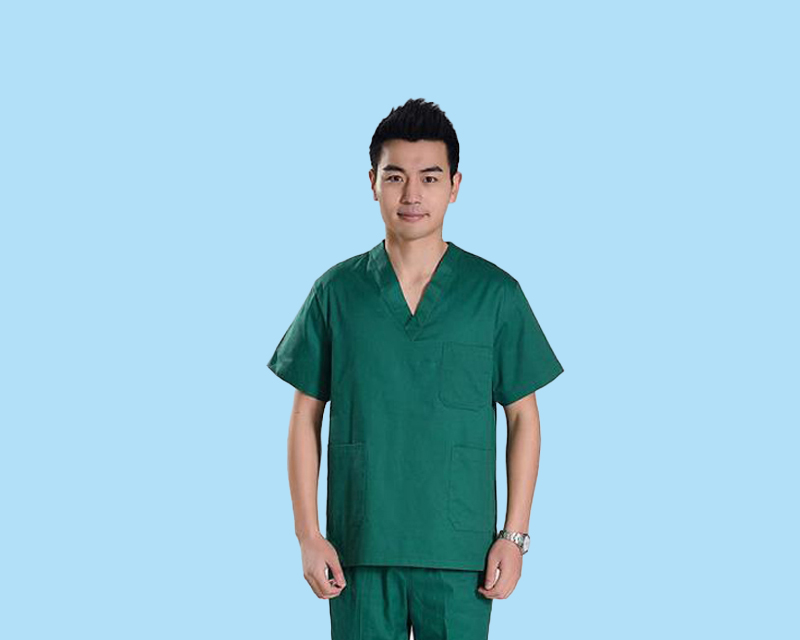Sanming Isolating Clothes Wholesale Price
What is the difference between medical isolation clothing and protective clothing? GB 19082-2009 [3] stipulates that protective clothing is applicable to provide barrier and protection for medical personnel when they are exposed to potentially infectious patients' blood, body fluid, secretions, particles in the air, etc. The protective clothing consists of hoodies and pants, and can be divided into one-piece structure and split type structure. One piece and split structure. Medical isolation clothing is a kind of protective equipment used by medical personnel to prevent blood, body fluid and other infectious substances from contaminating them, and also to protect patients from infection. Contact with patients with infectious diseases transmitted by contact, such as patients with infectious diseases and patients infected with multidrug resistant bacteria; Protective isolation shall be carried out for patients, such as patients with extensive burns and patients with bone graft; Prevent infection when patients' blood, body fluids, secretions and effluents splash. In a word, medical isolation clothing is used for patients in tight isolation, contact isolation and protective isolation. Medical and nursing protective clothing is a disposable protective equipment worn by medical staff when they are in clinical contact with Class A infectious disease patients or those under the management of Class A infectious diseases. When contacting patients with infectious diseases transmitted by air and droplets, they may be splashed by patients' blood, body fluids, secretions and emissions. But this kind of patient is not very serious, just a general infection.

Sanming Isolating Clothes Wholesale Price
The disposable medical transfer pad has three functions: first, it can save manpower and material resources. Only 1-2 people are needed to quickly get the patient across the bed. The original bed transfer must require 4-5 people to finish, and it has high requirements on the arm strength of the bed transfer personnel, which is very complex. However, after the use of the mobile sliding pad, these unnecessary losses can be greatly reduced and the labor force can be liberated; 2: Patients who do not move, such as those with fractures or after surgery, may not be touched or moved due to physical pain or drainage tubes on their bodies after surgery, so as to avoid secondary harm to patients. However, after using disposable medical transfer pads, we can find that patients do not need to be moved at all, It can end the transfer policy smoothly, which is also very beneficial for patients; 3: It is useful to avoid secondary hazards. In the previous transfer mode, multiple people were selected in different positions, and different sizes were selected according to the experience of the moving personnel. In this way, patients may have uncomfortable symptoms, and some careless moving personnel may cause harm to patients, but the medical transfer pad is different, It allows all patients to get out of bed and easily end the transfer process. We should also pay more attention in the process of using the medical transfer pad. For example, the height of the equipment should be adjusted to be the same when transferring. Even if there is a height difference, it should be within 15cm. Assuming that there must be a distance between the car/bed/table, it should be within 10cm to avoid unnecessary accidents when the distance is too far. [For details, please refer to Manufacturer Sharing: Significance of Clinical Use of Medical Mobile Sliding Pad This article mainly introduces the three functions of the medical transfer pad to you in detail. After carefully reading the above analysis and introduction, you must have a deeper understanding and understanding of the use of lubricating oil. If you have any doubts, please pay attention to our article update.

Sanming Isolating Clothes Wholesale Price
Which is better for wound treatment: civilian cotton swab or medical cotton swab? I believe everyone has experience in volunteering and donating blood. Every time the blood is pumped out, the doctor will take out two wooden cotton swabs from a evacuated packaging bag to let you press the wound. At this time, you will find carefully that the cotton swab given by the doctor seems to be different from the cotton swab we use everyday. In life, many children often buy cotton swabs from supermarkets or pharmacies and keep them at home, mainly for daily wound treatment or some liquid medicine application due to bumps or accidents. But it is worth noting that not every cotton swab can be used to wipe the wound or apply liquid medicine. At present, there are two common types of cotton swabs in the market: civilian cotton swabs and medical cotton swabs (some cotton swabs are used for industrial purposes, so I will not repeat them here). Because their appearance is very similar, if you do not understand them well, you are likely to use them "incorrectly", and ultimately fail to achieve the desired use effect. That is to say, only by clearly distinguishing the difference between civilian cotton swabs and medical cotton swabs can you correctly select the type of cotton swab you currently need. First of all, their difference and identification method is external packaging. The packaging of medical cotton swabs will have obvious words "medical cotton swabs". The civilian cotton swab will put the use function or material on the package, such as "cosmetic cotton swab", "stick cotton swab", etc. In addition, medical cotton swabs are divided into sterile medical cotton swabs and non sterile medical cotton swabs. Sterile cotton swabs are cotton swabs that have undergone disinfection or chemical disinfection; Non sterile cotton swabs are cotton swabs that have not undergone disinfection treatment and need professional disinfection by medical institutions before use. Therefore, when you are injured due to bumping or some other reasons, the wound should be treated with sterile medical cotton swabs. Non sterile cotton swabs can only be used after professional disinfection by doctors.

Sanming Isolating Clothes Wholesale Price
Composition of medical isolation shoe cover: medical isolation shoe cover consists of sole, upper and upper. The sole is fixedly connected with the upper, and the upper end of the upper is movably connected with the upper; The inner layer of the upper is equipped with an elastic band, and the upper port of the upper is equipped with a tightening strap. One side of the upper is provided with an opening which can be opened to form a plane, and the opening is connected by the fabric bonded with textiles. The upper and upper are bonded by textile bonding cloth. The sole is made of waterproof cloth, and the upper and upper are made of medical non-woven cloth. Medical isolation shoe covers are applicable to disposable medical isolation shoe covers (hereinafter referred to as protective shoe covers) used by medical personnel, disease control and epidemic prevention personnel when they are exposed to potentially infectious pollutants such as blood, body fluid, secretions, excreta and vomit indoors. The inspection standard for quality inspection report of medical isolation shoe covers is YY/T1633-2019. The main inspection items are: appearance, structure and specification, water resistance, surface moisture resistance, breaking strength and breaking elongation, filtration efficiency, ethylene oxide residue, microbial indicators, sterility, etc. The disposable shoe covers are characterized by convenient use, wide application range and different materials, The corresponding functions are also different, which can prevent slipping, static electricity and dust. And the price is much cheaper than non disposable shoe covers, and the treatment is also convenient, especially non-woven shoe covers, which can be naturally degraded.

Sanming Isolating Clothes Wholesale Price
Technical requirements for nursing pad sheet: 1 - Product model/specification and its classification description 1.1 Medical nursing pads are divided into I type non-woven fabric, II type non-woven fabric plus plastic film, III type toilet paper plus plastic film, and IV type non-woven fabric and plastic film with toilet paper sandwiched between them for sewing or pressing thickening and water absorption. 1.2 Medical nursing pads can be divided into: Type A: maternity pad; Type B: medium order; Type C: bed sheet; Type D: hole towel; Type E: quilt cover; Type F: pillowcase. Specification and model of medical nursing pad Unit: cm2 Performance index 2.1 See Table 1 for the specification and model of medical nursing pad. 2.2 The appearance of medical care pad shall be flat without obvious defects, stains, damages, abnormal smell and foreign matters. 2.3 The sewing or heat sealing medical care pad shall be firmly sewn, and shall not be disconnected or skipped. The sewing thread density shall not be less than 8 stitches/3cm, and the sewing edge distance shall not be less than 0.3cm. In case of heat sealing, it shall be firm without cracking. 2.4 Tightness plus film medical care pad, the film part shall not be permeable. 2.5 The medical care pad shall meet the health standards, with the total bacterial count ≤ 200 cfu/g, the total fungal count ≤ 100 cfu/g, coliform bacteria shall not be detected, and pathogenic pyogenic bacteria shall not be detected. 3 Test method 3.1 The basic dimensions measured with ordinary tape or steel ruler shall meet the requirements of 2.1. 3.2 Appearance, hand feeling and visual sensory inspection shall meet the requirements of 2.2. 3.3 The measurement with steel ruler for sewing shall comply with the provisions of 2.3. 3.4 Pour water on the pressed suture and the coating part. After 1 minute, there is no water mark on the reverse side. Put the sealed small package at the bottom of the container with the water height of 0.5 m, and slowly move it up to the water surface for a moment. Whether there is blister should comply with the provisions of 2.4. 3.5 Hygienic requirements shall be inspected according to the hygienic standards for disposable sanitary articles, and the results shall meet the provisions of Article 2.5.









